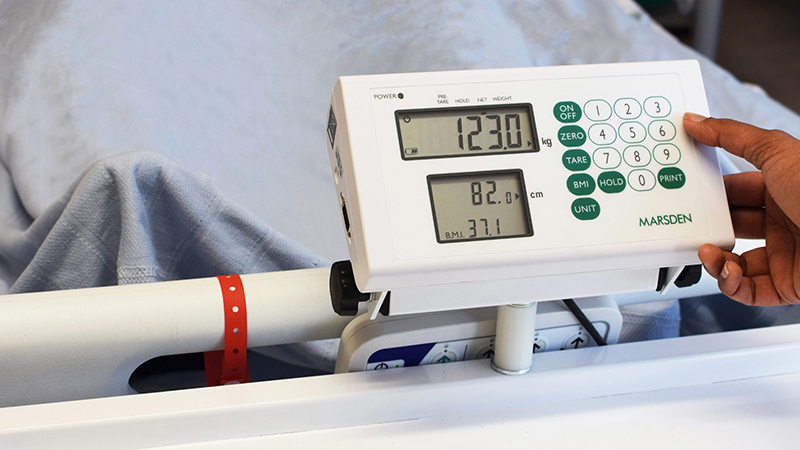Understanding Weighing Terminology

Here at Marsden, we understand that some of the terminology that we use when describing our weighing devices, is not always easy to understand for people that are not in the industry.
We have tried throughout our website to explain the various phrases by creating glossaries and guides. However, to provide further assistance, we have created this one blog post which encompasses all of our frequently asked questions in relation to terminology used.
Capacity - The maximum weight that the scale can weigh up to. Adding more weight to the scale than the capacity, could cause additional strain to the loadcells and damage the device.
Graduation - The graduation is the increments which the weight reading will climb in. For example, if the graduation of a scale is 100g, as load is applied to the scale, the display will increase in multiples of 100g.
Multi-Interval Graduation - If a scale has multi-interval graduations, it will be displayed as e.g., 100g<250kg>500g. In this example, the weighing device may have a capacity of 500kg. Anything below 250kg which is on the scale will be measured in graduations of 100g. Anything over 250kg on the scale will be measured in graduations of 500g. This is regularly used on multi-functional scales which can accommodate children and adults to ensure that accurate readings can be obtained for all.
Hold - By pressing the HOLD button on a weighing device, the display will capture a number of weights and then take an average and display that on screen. This function is highly useful in environments where the load on the scale is not stable, e.g., weighing babies and animals.
Tare - The TARE function can be used when removing unwanted load from the weighing scale. For example, if you are weighing goods which are palletised, you may want to deduct the weight of the pallet. To do this, turn on the scale, weigh a pallet, press the TARE key. The display will now show a negative weight reading and the palletised goods can be weighed, and an accurate reading can be obtained.
Class III Approved - In relation to the medical sector, Class III Approval is the regulations which medical weighing scales must be accredited to in order to monitor, diagnose and treat a patient based on their weight. Within a non-medical sector, a Class III Approved weighing scale should be used by law if a given weight is been used to calculate a price.
MDD/MDR Approved - MDD is the Medical Devices Directive. MDR is the Medical Devices Regulation. MDD and MDR applies to all general medical devices not covered by the Active Implantable Medical Devices Directive or the In Vitro Diagnostic Medical Devices Directive.
Declaration of Conformity - A Declaration of Conformity is a document which shows what the scale is accredited to. All of our Declaration of Conformities can be provided by a member of the Marsden sales administration team.
Indicator - An indicator on a weighing scale is the display which shows the weight reading. We have a number of indicators within our range that can be paired with our medical and industrial products.
Units - The term units is used in relation to the measuring range of the scale. For example, KG, LB, etc. On a number of non-approved weighing scales, there will be a button which allows the user to switch between the units set up on the device.
Zero - If when you turn the scale on and there is unwanted weight appearing on the screen, press the ZERO button to revert the scale back to 0.00. The scale will now be ready to use.
Calibration Certificate - A calibration certificate is a document which we can provide as the manufacturer for your internal records to show that at the time the weighing device was delivered, it was accurate and ready to use straight from the box.
IP Rating - IP ratings are used to define levels of sealing effectiveness of electrical enclosures against intrusion from foreign bodies, such as dust and liquid. To view our IP rating guide, please click here.
Loadcell - A loadcell is the component inside a weighing scale which converts force, such as tension, compression or torque into an electrical signal that can be measured.
Warranty - Warranty is a standard statement; however, we have varying warranty policies for the different products which we have in our range. For example, our medical range have 4 years as standard, and our industrial range have 1 year as standard. The reason for this is due to the environment of use for the devices. For more information, click here to see our warranty statement.
If you have any further questions, or if you have seen something which was not included in this blog post, please do reach out to us. As mentioned, some of the terminology which we use is specific to the weighing industry and we recognise that not everybody as an encyclopaedic knowledge of weighing devices.